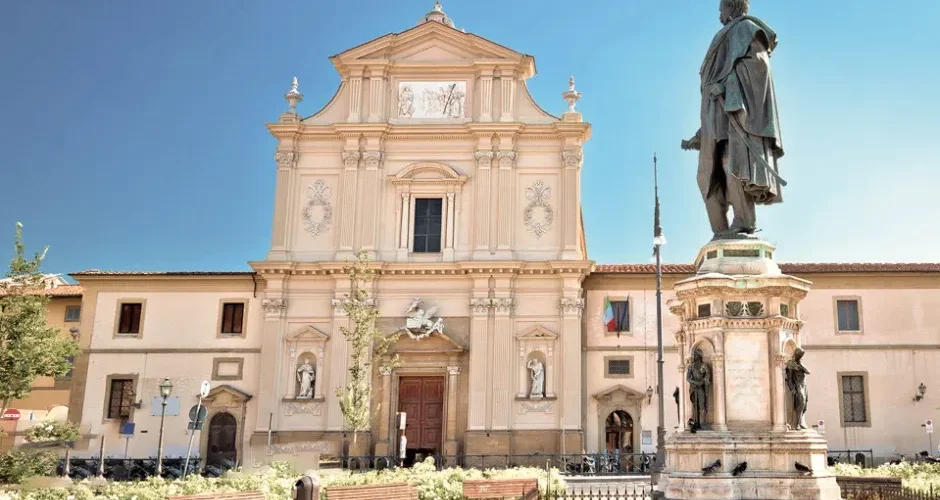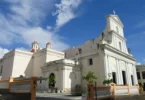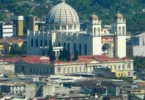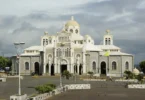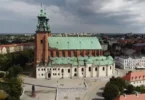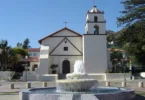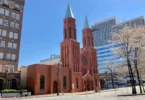Introduction
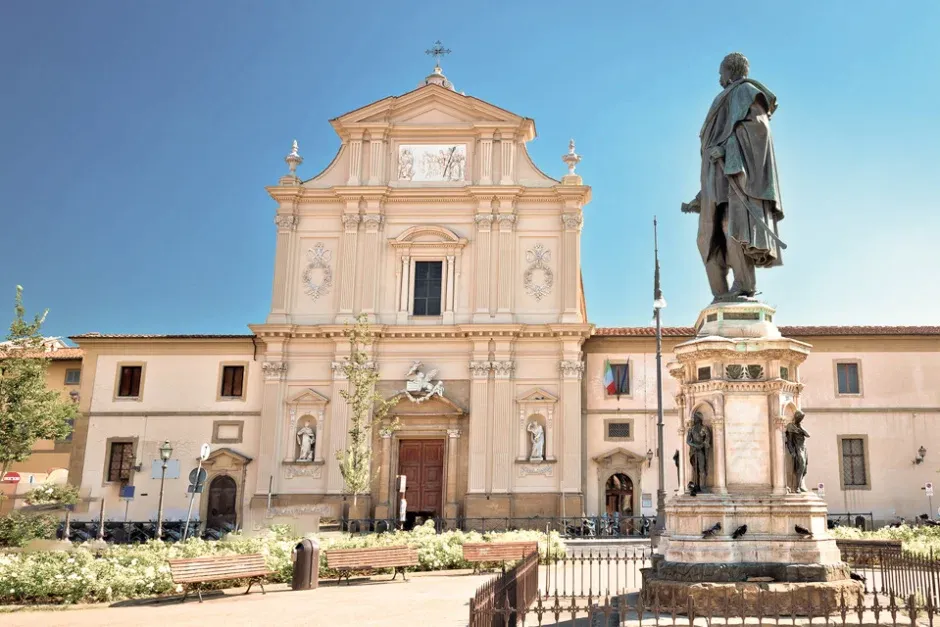
The Basilica of San Marco, located in the historic center of Florence, stands prominently in a bustling square, serving as a key landmark for the surrounding urban area. Originally part of the large San Marco convent complex, the church was home to many significant figures of fifteenth-century spirituality and culture. Among them were Cosimo the Elder, Saint Antonino, Beato Angelico, Ambrogio Catarino Politi, Fra Bartolomeo, and Tommaso Caccini, who famously challenged Galileo Galilei. Most notably, Fra’ Girolamo Savonarola preached against the moral decay of society, ultimately facing execution by hanging and burning in Piazza della Signoria in 1498.
From 1934, the former convent became the residence of Florence’s mayor, Giorgio La Pira, who was later buried in the Basilica. Since 1869, the convent has housed the Museum of San Marco, though the church and the nearby San Domenico cloister are not part of the museum’s collection.
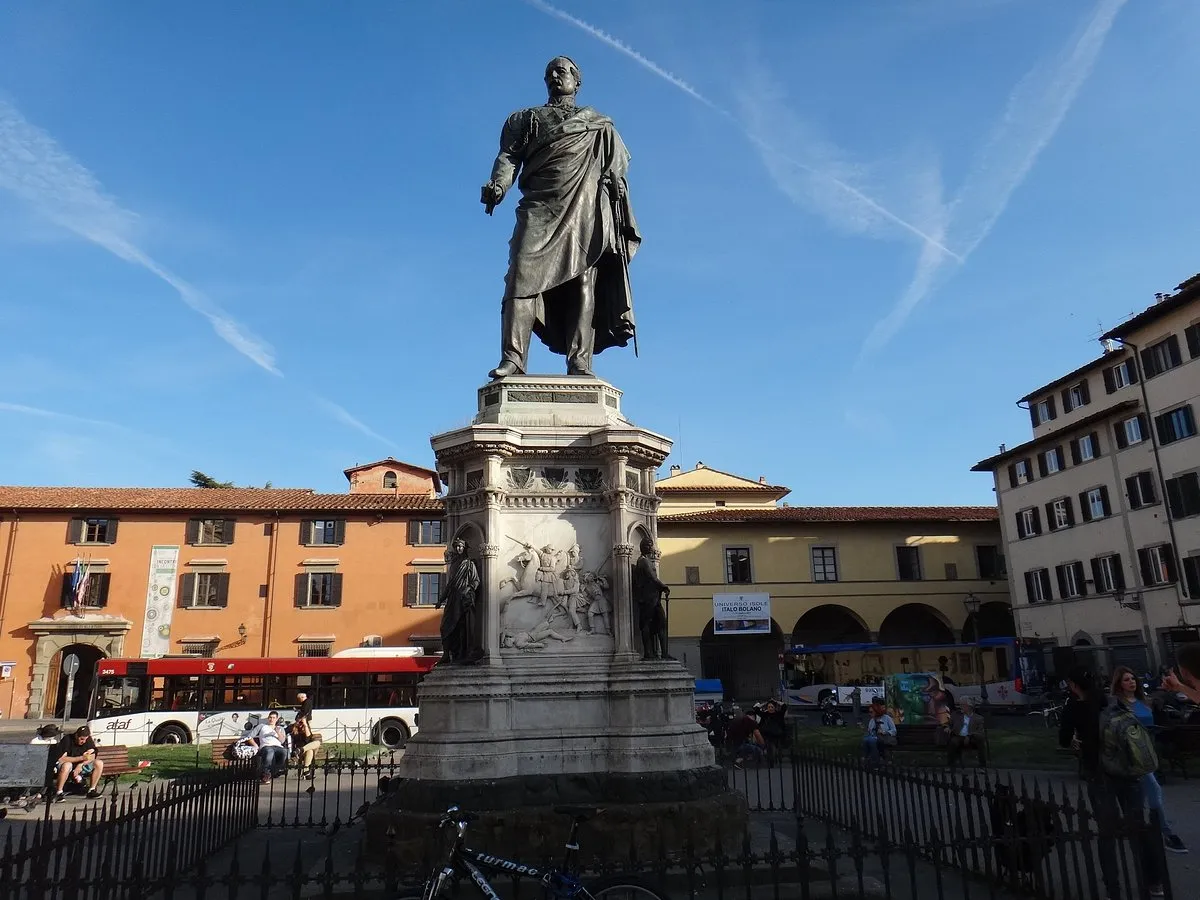
In ancient times, an oratory dedicated to Saint George stood on the site of the present-day San Marco complex. The current convent was built over the remains of a Vallombrosan monastery dating back to the 12th century. Later, the site was passed to the Silvestrini family, who had ties to a small church in the county of San Marco Vecchio, which is how the dedication to Saint Mark came about. At the time, the area was known as Cafaggio, which is why the church was initially referred to in early documents as San Marco al Cafaggio.
In 1418, the Silvestrini were forced to leave the site following orders from Pope Eugene IV, and in 1435, the convent was entrusted to the Observant Dominicans. Two years later, in 1437, Cosimo the Elder, acting on the advice of Antonino Pierozzi, vicar general of the Dominicans, began a significant renovation of the complex. The church, located in the heart of the Medici family’s area of influence (near the Palazzo Medici Riccardi), became a focal point of Medici patronage. The renovation work was entrusted to the architect Michelozzo, while the artistic decoration of the walls was entrusted to the renowned artist Beato Angelico and his collaborators, including Benozzo Gozzoli. The church was consecrated on the night of the Epiphany in 1443 by Cardinal Niccolò d’Acciapaccio, Archbishop of Capua, with Pope Eugene IV in attendance.
In 1866, the complex was definitively confiscated, and in 1869, it was partially transformed into a museum. The church and parts of the convent, including the cloister of San Domenico, continued to house a community of Dominican friars until 2019. This decision followed the decrees of the Provincial Chapter of 2017 and the Master of the Order. Today, the Dominican friars of Santa Maria Novella oversee the pastoral care and activities at both San Marco and Santa Maria Novella, ensuring that the legacy of these two important sites continues to thrive.
Architecture of Basilica of San Marco, Florence, Italy

Architect: Michelozzo
Architectural style: Renaissance Architecture
Burials: Angelo Poliziano
View of San Marco in the City Panorama
The Basilica of San Marco offers a striking view as part of Florence’s city panorama, standing out with its architectural significance.
The Facade
The façade of San Marco follows a neoclassical style and was completed in 1777-78. Designed by Fra’ Giovan Battista Paladini, as noted by an inscription on the window, the façade is divided into three sections. It features pilasters arranged in horizontal bands, with a single portal topped by a window. The lateral sections are decorated with two niches containing statues at the bottom, while ribbons and festoons adorn the upper sections. The top register includes a decorative bas-relief, a tympanum, and an iron cross crowning the structure.
The Bell Tower
The bell tower of San Marco was constructed in 1512, based on a design by the architect Baccio d’Agnolo.
The interior of the Basilica of San Marco features a single nave and several side chapels, designed in the late 16th century by Giambologna (from 1579) and decorated with 16th and 17th-century panels. Originally, the church was covered with 14th-century frescoes, some traces of which can still be found under the plaster. These remnants suggest that a series of paintings occurred between 1380 and 1420. Michelozzo was responsible for rebuilding both the sacristy and the apse.
In 1679, the tribune and the carved ceiling were constructed based on a design by Pier Francesco Silvani. The center of the ceiling features a canvas of the Assumption of the Virgin by Giovanni Antonio Pucci (1725).
Internal Features
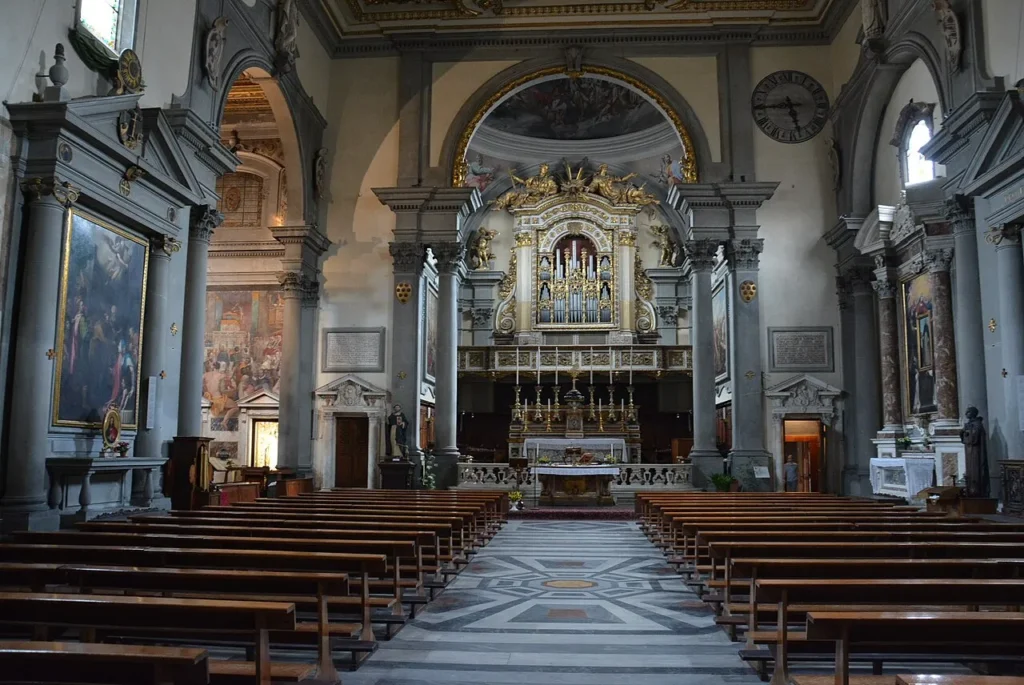
Counter-Facade
The counter-facade holds some of the best-preserved 14th-century paintings. It includes a large Crucifix from the school of Orcagna (around 1365) and an Annunciation (documented in 1375), influenced by the style of Jacopo di Cione, modeled after the famous miraculous Annunciation in the Basilica of the Santissima Annunziata.
On the left side is an altar that originally belonged to the Silk Guild. Since 1575, it has been in its present position, though previously located on the left wall of the nave. The late 16th-century altar once housed Botticelli’s Altarpiece of San Marco (1488-1490), now in the Uffizi, and now contains a canvas by Giovanni Battista Paggi titled Transfiguration (1596), commissioned by Vincenzo and Alessandro Brandolini.
Altars on the Right
The first altar on the right features an altarpiece by Santi di Tito, Vision of Saint Thomas Aquinas (1593), commissioned by Sebastiano Pandolfini del Turco. The second altar houses Madonna and Child with Saints by Fra Bartolomeo (around 1509), called Sacra Conversazione Cambi, named after the commissioning family. The third altar holds a large mosaic of the Virgin from the ancient Basilica of St. Peter in the Vatican, which came to Florence around 1596.
The fourth altar showcases a canvas by Matteo Rosselli, Madonna of the Rosary (1640), with angels carrying Saint Dominic to heaven. The statue of Saint Zanobi on the arch framing the altar was created by Giambologna.
Altars on the Left
The first altar near the counter-facade displays Miracle of Saint Vincent Ferrer by Passignano (1593). The second altar has a copy of Fra Bartolomeo’s Mystical Marriage of Saint Catherine by Anton Domenico Gabbiani (1690).
The third altar belongs to the Lucca Company of the Holy Cross of Silk Weavers, who commissioned a painting by Cigoli, Heraclius Carrying the Cross (1594), reflecting the company’s textile activity. On the sides of the chapel are the funerary monuments of the humanists Pico della Mirandola and Poliziano.
Main Altar
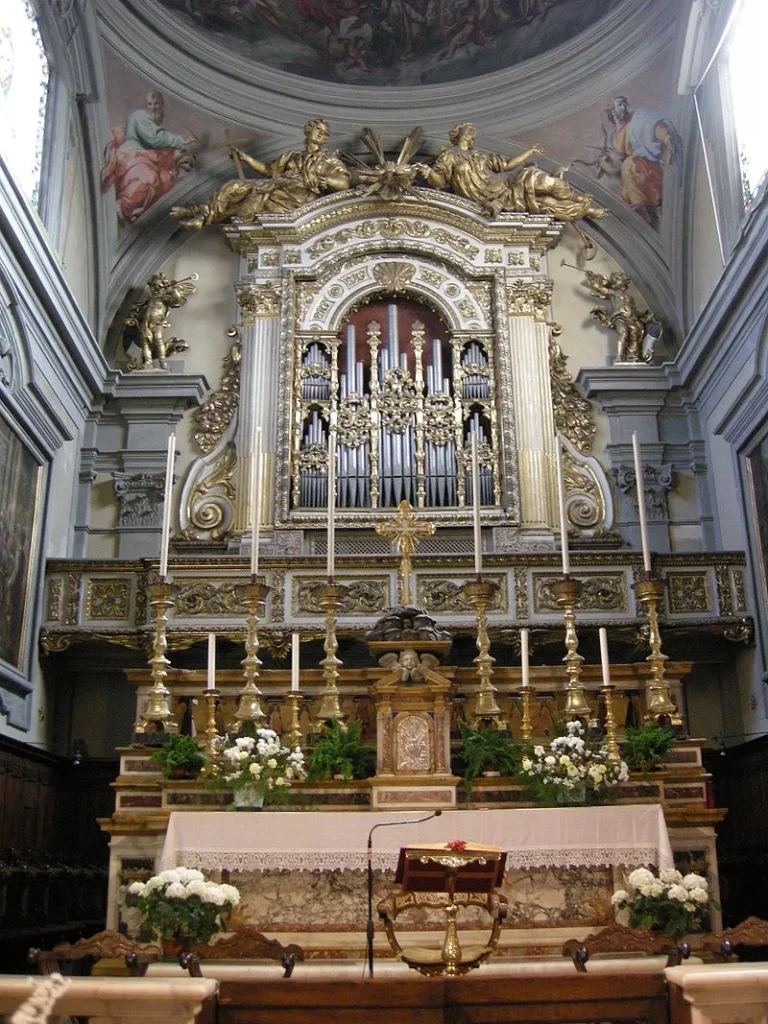
Apse and Dome
Access to the apse is granted through the sacristy, where two stone portals designed by Michelozzo are located. The dome, constructed according to Angelo Ferri’s design, was completed in 1712 and decorated with frescoes by Alessandro Gherardini (1717).
Presbytery and Main Altar
The frescoes in the presbytery were created by Ignace Parrocel, while the canvas beneath the organ, The Last Supper (1686), was painted by Pier Dandini. The main altar displays the precious Crucifix by Beato Angelico (1425-1428).
Serragli Chapel (Chapel of the Sacrament)
The Serragli Chapel, also known as the Chapel of the Sacrament, is located to the left of the presbytery and is accessed through a baroque portal. Dedicated to the mystery of the Eucharist, the chapel’s frescoed vault is divided into three areas, with works by Santi di Tito and Bernardino Poccetti, including the Gifts of the Holy Spirit, Christ in Glory, and Fruits of the Sweetness of Communion. The altarpiece, Communion of the Apostles, was completed by Santi di Tito and his son Tiberio.
Four additional canvases on the walls depict the History of Manna (1625), Supper at Emmaus by Francesco Curradi, Miracle of the Loaves and Fishes by Francesco Curradi, and Sacrifice of Isaac by Empoli.
Salviati Chapel
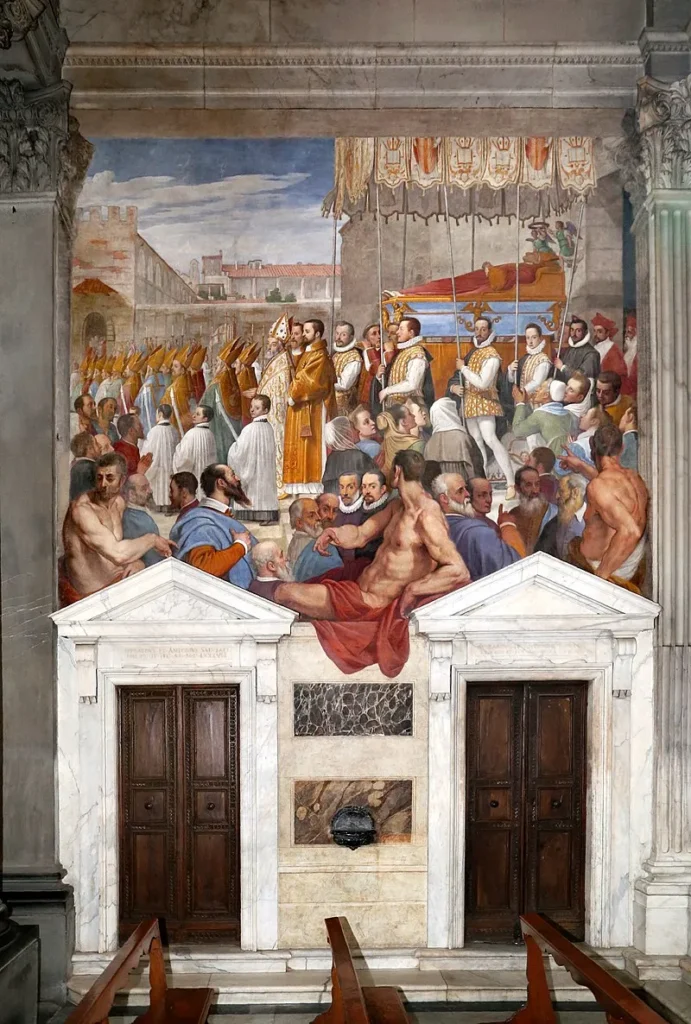
The Salviati Chapel, or Chapel of Sant’Antonino, holds the remains of the Florentine saint and archbishop. It was designed in the late 16th century by Giambologna, with decoration by Alessandro Allori. The chapel’s grisaille decoration was completed in 1588, and the altarpiece depicting Descent into Limbo was commissioned before 1584. The bronze bas-reliefs by Giambologna depict episodes from the life of Saint Antoninus.
Sacristy
The sacristy holds sacred furnishings from the 15th to the 17th centuries, along with the first tomb of Saint Antonino Pierozzi, Archbishop of Florence. The black marble sarcophagus, designed by Giambologna and Domenico Portigiani, features a bronze statue of the saint. The altar is accompanied by a panel of Mystical Marriage of Saint Catherine of Alexandria by Benedetto and Bartolomeo Coda (1531). The precious hanging of Sant’Antonino, based on Alessandro Allori’s design, completes the sacristy’s decoration.
Feast Day
Feast Day : 25th April
The feast day of the Basilica of San Marco in Florence is celebrated on April 25th. This day is dedicated to Saint Mark the Evangelist, after whom the church is named. Saint Mark’s feast day is observed throughout the Christian world, and the Basilica of San Marco in Florence honors this day with special liturgies and events.
Church Mass Timing
Monday : 6.30 PM
Tuesday : 6.30 PM
Wednesday : 6.30 PM
Thursday : 6.30 PM
Friday : 6.30 PM
Saturday : 6.30 PM
Sunday : 11.00 AM and 6.30 PM
Church Opening Time:
Church Opening Hours
Monday : 9:30 am – 12:30 pm, 3:00 pm – 7:00 pm
Tuesday : 9:30 am – 12:30 pm, 3:00 pm – 7:00 pm
Wednesday : 4:30 pm – 7:00 pm
Thursday : 9:30 am – 12:30 pm, 3:00 pm – 7:00 pm
Friday : 9:30 am – 12:30 pm, 3:00 pm – 7:00 pm
Saturday : 9:30 am – 12:30 pm, 3:00 pm – 7:00 pm
Sunday : 10:00 am – 12:30 pm, 4:30 pm – 7:00 pm
Contact Info
Address:
Piazza San Marco, 1, 50121 Firenze FI, Italy.
Phone : +39055287628
Accommodations
Connectivities
Airway
Florence Airport (FLR) to Basilica of San Marco, Florence, Italy distance between 25 min (8.4 km) via Viale Alessandro Guidoni.
Railway
Florence Santa Maria Novella railway station to Basilica of San Marco, Forence, Italy near distance between 9 min (2.2 km) via SS67 and Via Camillo Cavour.

